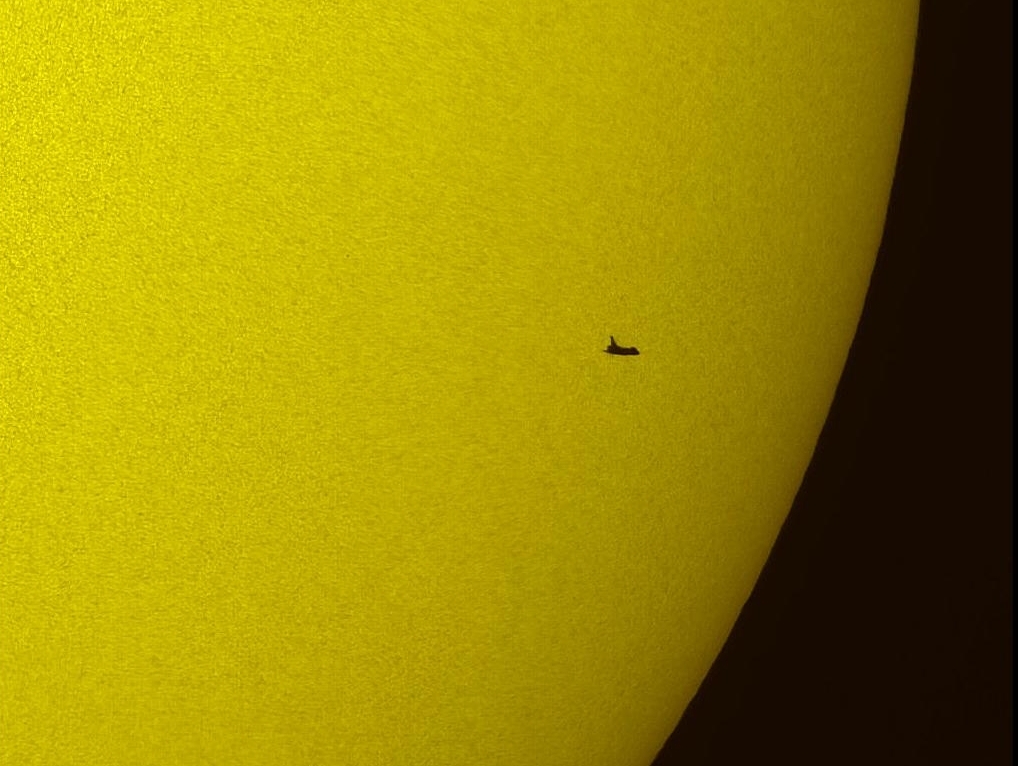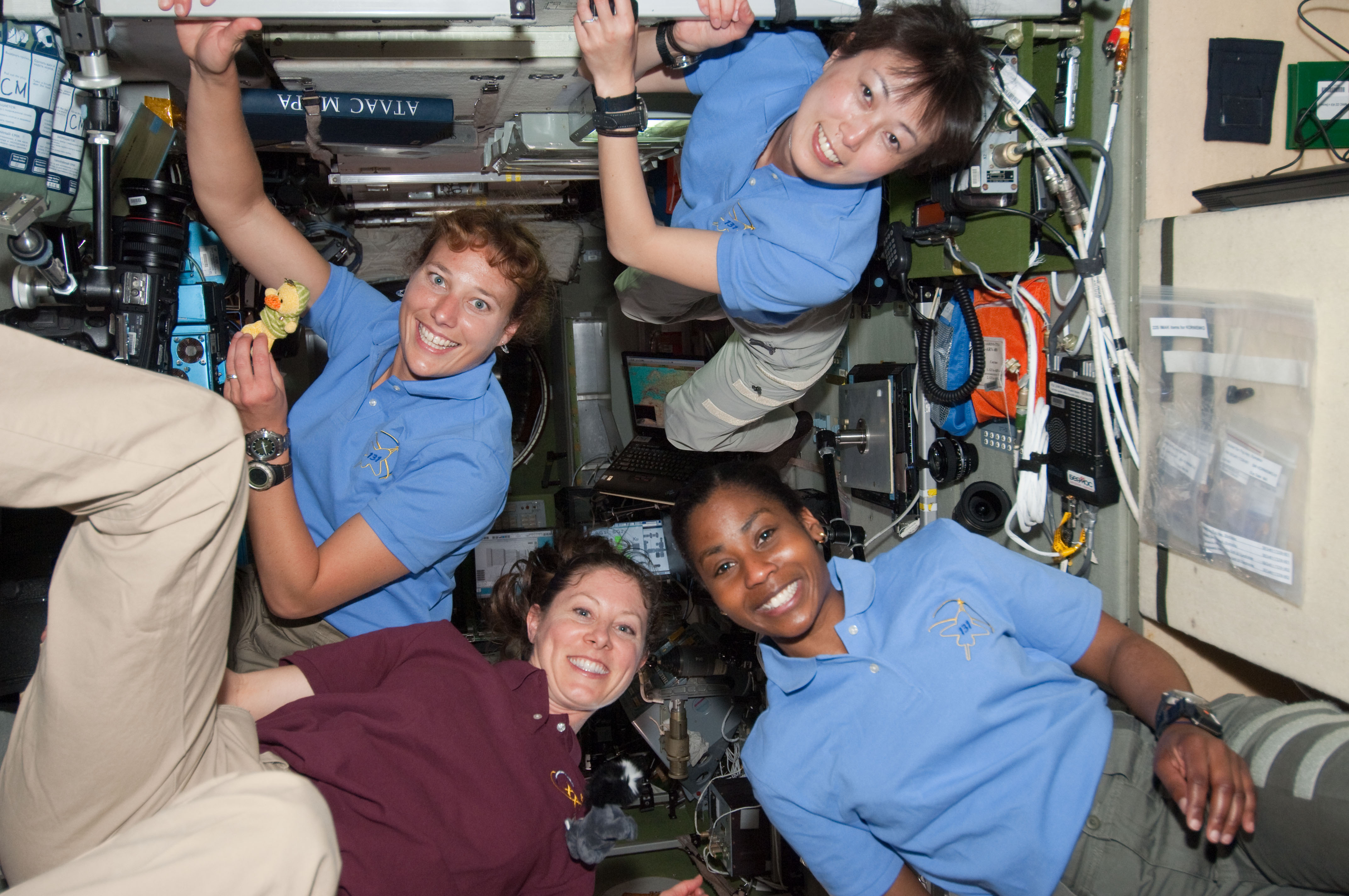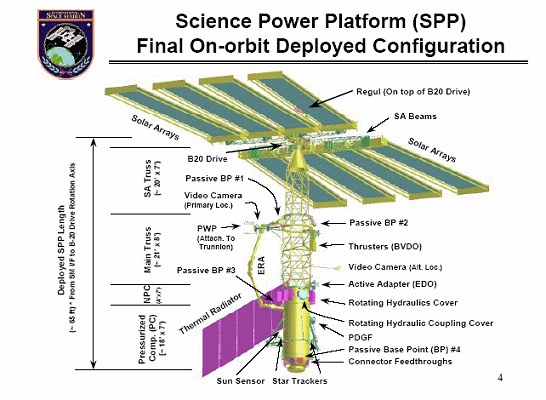|
STS-132
STS-132 ( ISS assembly flight ULF4) was a NASA Space Shuttle mission, during which Space Shuttle ''Atlantis'' docked with the International Space Station on May 16, 2010. STS-132 was launched from the Kennedy Space Center on May 14, 2010. The primary payload was the Russian ''Rassvet'' Mini-Research Module, along with an Integrated Cargo Carrier-Vertical Light Deployable (ICC-VLD). ''Atlantis'' landed at the Kennedy Space Center on May 26, 2010. STS-132 was initially scheduled to be the final flight of ''Atlantis'', provided that the STS-335/STS-135 Launch On Need rescue mission would not be needed. However, in February 2011, NASA declared that the final mission of ''Atlantis'' and of the Space Shuttle program, STS-135, would be flown regardless of the funding situation. Crew Crew seat assignments Mission payload Mini-Research Module 1 (MRM 1) STS-132 carried the Russian ''Rassvet'' Mini-Research Module 1 to the International Space Station. ''Rassvet'' means "dawn" ... [...More Info...] [...Related Items...] OR: [Wikipedia] [Google] [Baidu] |
Space Shuttle Atlantis
Space Shuttle ''Atlantis'' (Orbiter Vehicle designation: OV‑104) is a retired Space Shuttle orbiter vehicle which belongs to NASA, the spaceflight and space exploration agency of the United States. ''Atlantis'' was manufactured by the Rockwell International company in Southern California and was delivered to the Kennedy Space Center in Eastern Florida in April 1985. ''Atlantis'' is the fourth operational and the second-to-last Space Shuttle built. Its maiden flight was STS-51-J made from October 3 to 7, 1985. ''Atlantis'' embarked on its 33rd and final mission, also the final mission of a space shuttle, STS-135, on July 8, 2011. STS-134 by Space Shuttle Endeavour, ''Endeavour'' was expected to be the final flight before STS-135 was authorized in October 2010. STS-135 took advantage of the processing for the STS-335 Launch on Need mission that would have been necessary if STS-134's crew became stranded in orbit. ''Atlantis'' landed for the final time at the Kennedy Space Cent ... [...More Info...] [...Related Items...] OR: [Wikipedia] [Google] [Baidu] |
Rassvet (ISS Module)
''Rassvet '' (), also known as the ''Mini-Research Module 1'' (MRM 2, ) and formerly known as the Docking Cargo Module, is a component of the International Space Station (ISS). The module's design is similar to the Mir Docking Module launched on STS-74 in 1995. ''Rassvet'' is primarily used for cargo storage and as a docking port for visiting spacecraft. It was flown to the ISS aboard on the STS-132 mission on 14 May 2010, and was connected to the ISS on 18 May 2010. The hatch connecting ''Rassvet'' with the ISS was first opened on 20 May 2010. On 28 June 2010, the Soyuz TMA-19 spacecraft performed the first docking with the module. Details ''Rassvet'' was berthed to the nadir port of '' Zarya'' with help from the Canadarm2. ''Rassvet'' carried externally attached ( piggybacking) outfitting equipment for the future ''Nauka'' (Multipurpose Laboratory Module-Upgrade). That equipment included a spare elbow joint for the European Robotic Arm (ERA), an ERA portable work ... [...More Info...] [...Related Items...] OR: [Wikipedia] [Google] [Baidu] |
International Space Station
The International Space Station (ISS) is a large space station that was Assembly of the International Space Station, assembled and is maintained in low Earth orbit by a collaboration of five space agencies and their contractors: NASA (United States), Roscosmos (Russia), European Space Agency, ESA (Europe), JAXA (Japan), and Canadian Space Agency, CSA (Canada). As the largest space station ever constructed, it primarily serves as a platform for conducting scientific experiments in microgravity and studying the space environment. The station is divided into two main sections: the Russian Orbital Segment (ROS), developed by Roscosmos, and the US Orbital Segment (USOS), built by NASA, ESA, JAXA, and CSA. A striking feature of the ISS is the Integrated Truss Structure, which connect the station’s vast system of solar panels and Spacecraft thermal control, radiators to its pressurized modules. These modules support diverse functions, including scientific research, crew habitation, ... [...More Info...] [...Related Items...] OR: [Wikipedia] [Google] [Baidu] |
Kenneth Ham
Kenneth Todd "Hock" Ham (born December 12, 1964) is a retired American astronaut and a captain in the United States Navy. Ham was selected for NASA's astronaut program in August 1998, while serving as the F/A-18E/F Super Hornet lead carrier suitability test pilot. Ham's aviator call sign is "Hock". Ham traveled to space twice as part of the Space Shuttle program. He flew on STS-124 as pilot and then on STS-132 as mission commander. Early life and education Ken Ham was born in Plainfield, New Jersey, to Ed and Marion Ham. He graduated from Arthur L. Johnson High School in Clark, New Jersey in 1983, where he had started taking flying lessons at the suggestion of a high school guidance counselor. He then went on to the United States Naval Academy, graduating in 1987 with a bachelor's degree in aerospace engineering. In 1996, he earned a Master of Science degree in aeronautical engineering from the Naval Postgraduate School. A Distinguished Graduate of the U.S. Naval Test Pilot Sch ... [...More Info...] [...Related Items...] OR: [Wikipedia] [Google] [Baidu] |
Garrett Reisman
Garrett Erin Reisman (; born February 10, 1968) is an American engineer and former NASA astronaut. He was a backup crew member for Expedition 15 and joined Expedition 16 aboard the International Space Station for a short time before becoming a member of Expedition 17. He returned to Earth on June 14, 2008 on board STS-124 on Space Shuttle Discovery, Space Shuttle ''Discovery''. He was a member of the STS-132 mission that traveled to the International Space Station aboard Space Shuttle Atlantis, Space Shuttle ''Atlantis'' from May 14 to 26, 2010. He is a consultant at SpaceX and a Professor of Astronautics Practice at the University of Southern California's Viterbi School of Engineering. Biography Reisman was born in Morristown, New Jersey to a Jewish family. After graduating from Parsippany High School in 1986, he went to the Jerome Fisher Program of Management & Technology, a dual degree program between Wharton School and the University of Pennsylvania School of Engineering and A ... [...More Info...] [...Related Items...] OR: [Wikipedia] [Google] [Baidu] |
ISS Assembly Sequence
The process of assembling the International Space Station (ISS) has been under way since the 1990s. ''Zarya (ISS module), Zarya'', the first ISS module, was launched by a Proton (rocket), Proton rocket on 20 November 1998. The STS-88 Space Shuttle mission followed two weeks after ''Zarya'' was launched, bringing ''Unity (ISS module), Unity'', the first of three node modules, and connecting it to ''Zarya''. This bare 2-module core of the ISS remained uncrewed for the next one and a half years, until in July 2000 the Russian module ''Zvezda (ISS module), Zvezda'' was launched by a Proton rocket, allowing a maximum crew of three astronauts or cosmonauts to be on the ISS permanently. The ISS has a pressurized volume of approximately , a mass of approximately , approximately 100 kilowatts of power output, a truss long, modules long, and a crew of seven. Building the complete station required more than 40 assembly flights. As of 2020, #Assembly sequence, 36 Space Shuttle flights deliv ... [...More Info...] [...Related Items...] OR: [Wikipedia] [Google] [Baidu] |
Piers Sellers
Piers John Sellers (11 April 1955 – 23 December 2016) was a British-American meteorologist, NASA astronaut and Director of the Earth Science Division at NASA/GSFC. He was a veteran of three Space Shuttle missions. Sellers attended Cranbrook School, Cranbrook, Kent, United Kingdom, until 1973, and achieved a bachelor's degree in ecological science from the University of Edinburgh in 1976. In 1981 he gained a doctorate in biometeorology from the University of Leeds. In 2011, Sellers retired from the NASA Astronaut Corps. Before joining the astronaut corps, Sellers worked at NASA Goddard Space Flight Center on research into how the Earth's biosphere and atmosphere interact. This work involved climate system computer modelling and field work utilising aircraft, satellites and ground support input. Personal life and death Sellers was born in Crowborough, Sussex, the second born of five boys for mother Lindsey. His education started at Tyttenhanger Lodge Pre-preparatory Schoo ... [...More Info...] [...Related Items...] OR: [Wikipedia] [Google] [Baidu] |
STS-131
STS-131 ( ISS assembly flight 19A) was a NASA Space Shuttle mission to the International Space Station (ISS). launched on April 5, 2010, at 6:21 am from LC-39A, and landed at 9:08 am on April 20, 2010, on runway 33 at the Kennedy Space Center's Shuttle Landing Facility. The mission marked the longest flight for Space Shuttle ''Discovery'' and its 38th and penultimate flight. The primary payload was a Multi-Purpose Logistics Module loaded with supplies and equipment for the International Space Station. The mission also removed and replaced an ammonia tank assembly outside the station on the S1 truss. STS-131 furthermore carried several on-board payloads; this mission had the most payloads since STS-107. It is also the last shuttle mission with a crew of 7. Crew Crew seat assignments Mission payload Multi-Purpose Logistics Module ''Leonardo'' The primary payload of STS-131 was the Multi-Purpose Logistics Module (MPLM) ''Leonardo''. The MPLM was filled with ... [...More Info...] [...Related Items...] OR: [Wikipedia] [Google] [Baidu] |
Nauka (ISS Module)
''Nauka'' (), also known as the ''Multipurpose Laboratory Module, Upgrade'' (MLM-U, ), is the primary laboratory of the Russian Orbital Segment of the International Space Station (ISS). Serving alongside the ''Rassvet'' and ''Poisk'' mini-research modules, Nauka conducts scientific experiments and stores research equipment. Originally built as a backup for ''Zarya'', the very first module of the ISS, ''Nauka'''s construction was halted in the late 1990s, when it was about 70% complete. After exploring various options, Roscosmos decided to convert the partially completed module into a laboratory. While the initial target launch date was set for 2007, and outfitting equipment for Nauka was delivered by Space Shuttle ''Atlantis'' in 2010 attached to the ''Rassvet'' module, numerous delays and technical issues delayed the launch by 14 years. ''Nauka'' finally launched on 21 July 2021 at 14:58:25UTC from the Baikonur Cosmodrome atop a Proton-M rocket. Like most of the Russian mo ... [...More Info...] [...Related Items...] OR: [Wikipedia] [Google] [Baidu] |
NASA
The National Aeronautics and Space Administration (NASA ) is an independent agencies of the United States government, independent agency of the federal government of the United States, US federal government responsible for the United States's civil list of government space agencies, space program, aeronautics research and outer space, space research. National Aeronautics and Space Act, Established in 1958, it succeeded the National Advisory Committee for Aeronautics (NACA) to give the American space development effort a distinct civilian orientation, emphasizing peaceful applications in space science. It has since led most of America's space exploration programs, including Project Mercury, Project Gemini, the 1968–1972 Apollo program missions, the Skylab space station, and the Space Shuttle. Currently, NASA supports the International Space Station (ISS) along with the Commercial Crew Program and oversees the development of the Orion (spacecraft), Orion spacecraft and the Sp ... [...More Info...] [...Related Items...] OR: [Wikipedia] [Google] [Baidu] |
STS-133
STS-133 (Assembly of the International Space Station#Assembly sequence, ISS assembly flight ULF5) was the 133rd mission in NASA's Space Shuttle program; during the mission, Space Shuttle Discovery, Space Shuttle ''Discovery'' docked with the International Space Station. It was ''Discovery'''s 39th and final mission. The mission launched on February 24, 2011, and landed on March 9, 2011. The crew consisted of six American astronauts, all of whom had been on prior spaceflights, headed by Commander Steven W. Lindsey, Steven Lindsey. The crew joined the long-duration six person crew of Expedition 26, who were already aboard the space station. About a month before lift-off, one of the original crew members, Timothy L. Kopra, Tim Kopra, was injured in a bicycle accident. He was replaced by Stephen G. Bowen, Stephen Bowen. The mission transported several items to the space station, including the Leonardo (ISS module), Permanent Multipurpose Module ''Leonardo'', which was left permanentl ... [...More Info...] [...Related Items...] OR: [Wikipedia] [Google] [Baidu] |
European Robotic Arm
The European Robotic Arm (ERA) is a robotic arm that is attached to the Russian Orbital Segment (ROS) of the International Space Station. Launched to the ISS in July 2021; it is the first robotic arm that is able to work on the Russian Segment of the station. The arm supplements the two Russian ''Strela'' cargo cranes that were originally installed on the '' Pirs'' module, but were later moved to the docking compartment ''Poisk'' and '' Zarya'' module. The ERA was developed for the European Space Agency (ESA) by a number of European space companies. Airbus Defence and Space Netherlands (formerly Dutch Space) designed and assembled the arm and was the prime contractor; it worked along with subcontractors in 8 countries. In 2010, a spare elbow joint for the arm and ERA's Portable Workpost was launched preemptively, attached to ''Rassvet'' or Mini Research Module 1(MRM-1). The '' Nauka Module'' and Prichal module serves as home base for ERA; originally, the arm was going to be ... [...More Info...] [...Related Items...] OR: [Wikipedia] [Google] [Baidu] |







